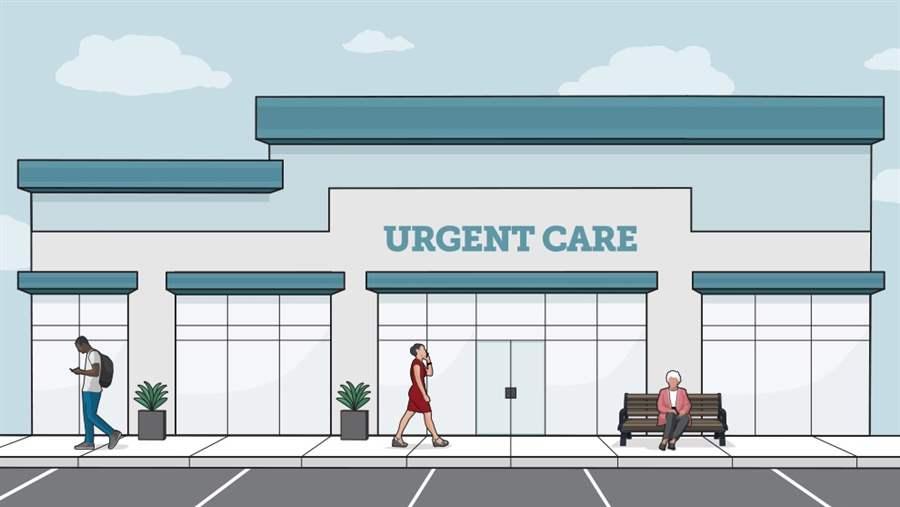Common Problems Dealt With at Urgent Care Clinics You Ought To Know
Common Problems Dealt With at Urgent Care Clinics You Ought To Know
Blog Article
Understanding the Importance of Urgent Care Services for Non-Life-Threatening Medical Issues
The importance of urgent care services for non-life-threatening medical issues can not be overemphasized, especially in today's health care landscape. These centers supply an important option for individuals looking for punctual attention for conditions that need prompt treatment however do not call for a see to the emergency clinic. By recognizing the benefits of urgent treatment, such as reduced wait times and price effectiveness, one can better value their duty in client health administration. Yet, the subtleties of just how to navigate these solutions successfully continue to be to be discovered, increasing questions about their optimal application.
What Is Urgent Care?
Immediate care describes a group of medical services developed to attend to non-life-threatening problems that need prompt interest yet do not call for a visit to the emergency situation room. These facilities give a bridge between health care and emergency services, providing easily accessible health care alternatives for people experiencing intense medical issues, such as small fractures, strains, infections, or extreme diseases that occur unexpectedly.

The range of services provided by urgent care centers can differ however normally consists of therapy for typical ailments like colds, flu, and allergic reactions, in addition to minor injuries (urgent care). Additionally, many immediate treatment facilities use preventative services, such as vaccinations and physical examinations, to address more comprehensive health and wellness needs. By providing a hassle-free choice for immediate medical problems, these facilities play a vital role in the healthcare continuum, guaranteeing that clients receive suitable treatment when they require it most
Benefits of Urgent Care Solutions
Many individuals locate that making use of urgent care solutions supplies considerable advantages over conventional emergency situation area gos to or awaiting a main care consultation. One key advantage is the lowered wait times. Urgent care centers normally have much shorter delay durations, enabling clients to receive prompt clinical focus when they need it most. This expedited care is particularly helpful for non-life-threatening problems that require prompt intervention.
An additional advantage is the extensive hours of procedure. Several urgent treatment facilities are open nights and weekend breaks, suiting individuals who might not have the ability to see their main treatment doctor throughout routine workplace hours. This flexibility makes it simpler for individuals to access treatment at their convenience.
Additionally, urgent care services frequently offer an economical option to emergency spaces. People regularly face lower co-pays and total costs when seeking treatment for minor conditions at urgent care centers rather than health center emergency departments.
Last but not least, immediate treatment facilities are furnished to take care of a range of non-life-threatening issues, giving a broad range of services under one roofing system. This detailed method not only simplifies the treatment process however additionally boosts client contentment by delivering punctual and reliable care.
Typical Conditions Treated
What types of non-life-threatening conditions can clients expect to receive treatment for at immediate care? Urgent care facilities are outfitted to handle a wide variety of usual medical problems that call for timely interest but do not position an instant threat to life. These facilities generally treat problems such as minor cracks, sprains, and stress, providing essential take care of injuries that occur during day-to-day activities or sports.
In addition, people frequently look for treatment for respiratory infections, including colds, flu, and bronchitis, where prompt intervention can reduce signs and stop issues. Skin problem such as breakouts, insect attacks, and minor burns are additionally typically dealt with, as prompt treatment can minimize discomfort and minimize the threat of infection.

Comparing Urgent Treatment and Emergency Situation Spaces

One substantial distinction waits times; urgent treatment centers typically have much shorter wait times compared to emergency rooms, which can be congested with even more important situations. This effectiveness enables patients to obtain prompt treatment for their conditions.
From an economic viewpoint, immediate treatment check outs have a tendency to be much less expensive than emergency situation room visits. Insurance coverage copays and out-of-pocket expenses are usually reduced at immediate care facilities, making them a more cost-effective option for non-emergency scenarios.
Exactly How to Choose an Urgent Care Facility
Choosing the right immediate care center can dramatically improve the top quality of care received throughout a non-life-threatening medical issue. When picking an urgent care facility, a number of essential factors should be considered.
First, evaluate the center's certification and licensing. Try to find facilities that are accredited by recognized companies, as this suggests adherence to quality criteria. Next, assess the series of solutions used. Some immediate care centers concentrate on specific areas, while others provide thorough look after various medical problems.
Additionally, take into consideration the area and hours of operation. An easily situated center with extensive hours can be vital for timely care. It's likewise recommended to inspect the center's wait times and individual evaluations, which can supply understandings right into the overall person experience.
Verdict
In final thought, urgent care solutions play a crucial function in resolving non-life-threatening clinical problems efficiently. Eventually, recognizing the importance of urgent care facilities contributes to improved health care administration and individual complete satisfaction.
 By using a convenient choice for urgent clinical issues, view these centers play anchor an essential duty in the medical care continuum, making sure that people get proper treatment when they require it most.
By using a convenient choice for urgent clinical issues, view these centers play anchor an essential duty in the medical care continuum, making sure that people get proper treatment when they require it most.Several people discover that using urgent care solutions supplies substantial advantages over conventional emergency situation area brows through or waiting for a primary care visit. Lots of urgent treatment centers are open nights and weekends, fitting people who may not be able to see their primary treatment medical professional throughout routine office hours. Urgent care centers are made to attend to non-life-threatening conditions, such as small cracks, infections, and diseases, providing a practical choice to emergency situation areas for those in demand of immediate treatment. Some urgent care facilities specialize in specific locations, while others provide detailed treatment for numerous medical issues.
Report this page